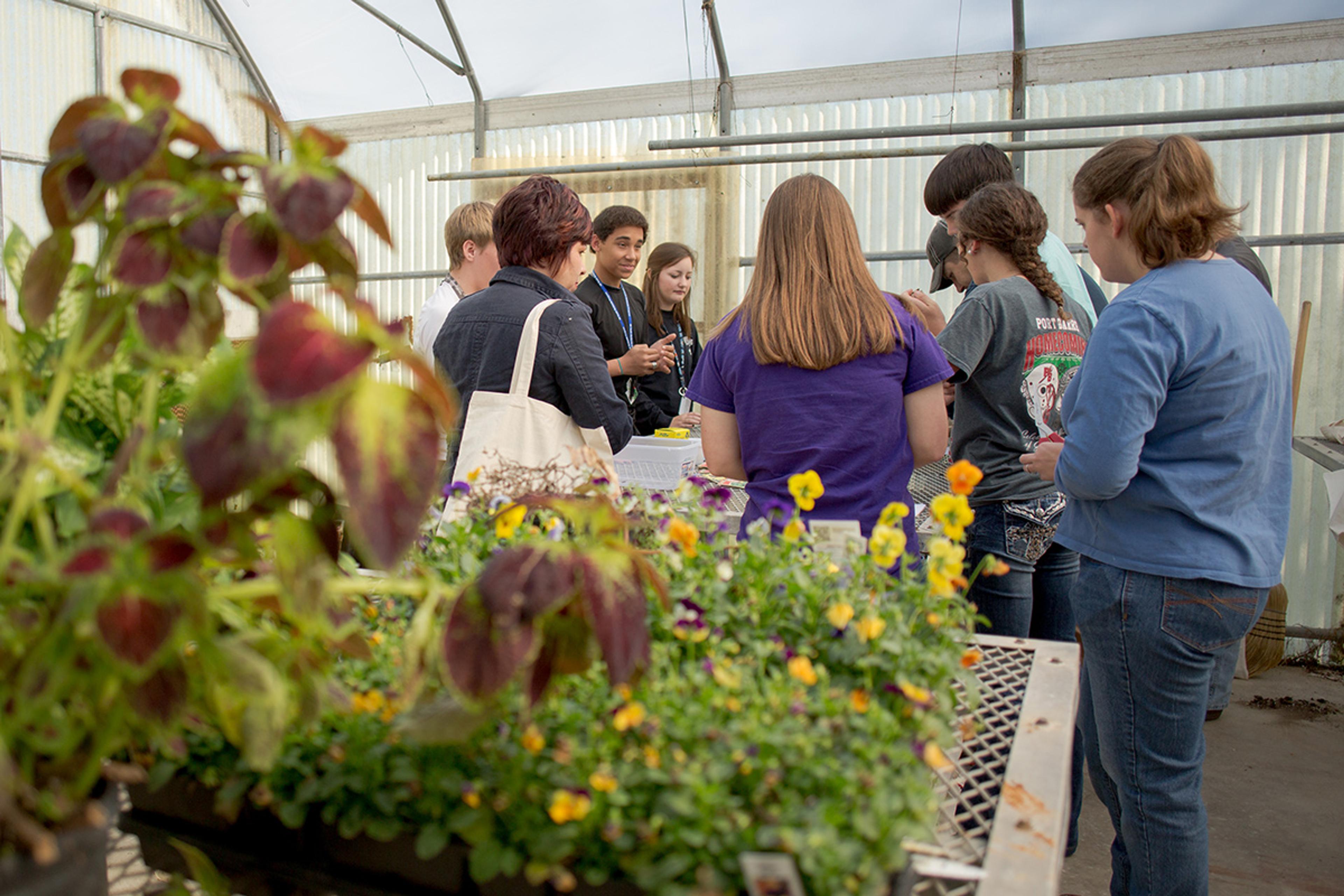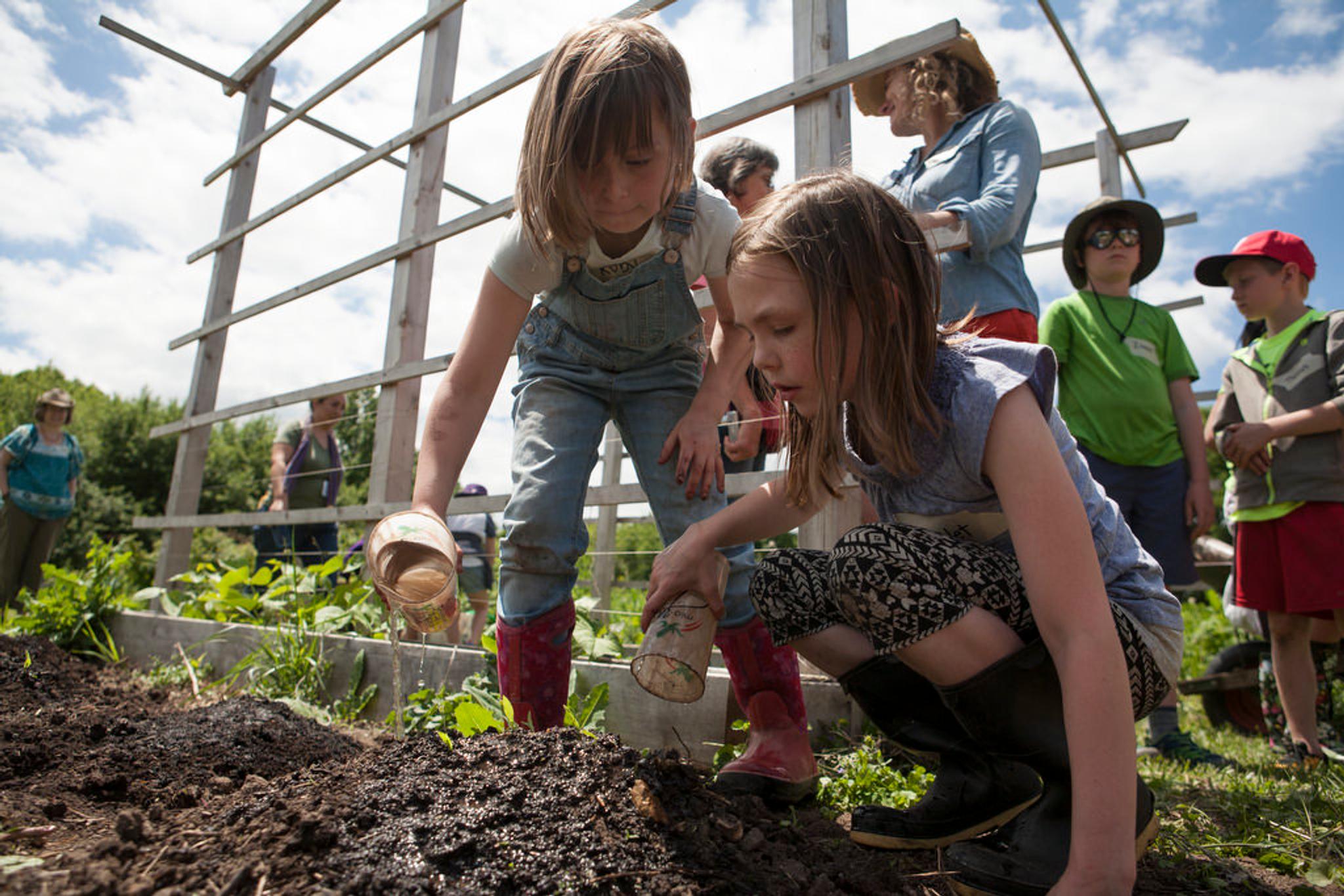
Rooted
School Gardens: Growing More Than Just Fruits and Veggies
School gardens across the country are growing more than just fruits and veggies. They’re offering hands-on learning that combines science, environmental education, math, cultural affluence, and more as students work literally in the field.
Last fall, Organic Valley partnered with the National Farm to School Network to donate funds toward school garden initiatives. Three co-ops whose patrons purchased the most Organic Valley products were allowed to choose a local school to receive a donation to its school garden program.
Although 2020’s COVID-19 crisis has stalled some schools’ work in developing their gardens, the school garden leaders remain enthusiastic for their programs when school is back in session.
But let’s back up… Why start a school garden?
What exactly are the benefits? How do you launch and maintain one? We chatted with teachers and organizers from the winning schools and the National Farm to School Network to learn just how much school gardens can help students.
Erik Hahn is a science teacher and environmental education coordinator at Great Expectations School in Grand Marais, Minnesota. He shared that “teachers have started gardens to connect students with the foods they eat and to learn about the seasons and life cycles of plants and insects. They have created gardens to beautify the school grounds and to share flowers with the senior center.” His focus has been to integrate the gardens into the school curriculum. “Not just for science and environmental education, but to weave it into art, social studies, math, and even language arts. My other focus has been on ramping up our food production and student involvement in the gardens so that students are contributing to their school lunches in a measurable and meaningful way.”
Sam Blomquist is a registered dietician and chair of the Whittier Parent Advisory Council for Whittier Elementary School in Bozeman, Montana. She said they originally launched their school garden program to assist with nutrition needs. “Bozeman is an affluent community; however, our district has significant income disparities at a few elementary schools, Whittier being one of them. Public health data from our community indicates that kids at our school are less likely to have access to fresh fruits and vegetables—and also less access to educational experiences focused on food and health.”
“Offering opportunities for children to work in the garden becomes multidisciplinary, spanning many cultural, language, math, and science topics,” says Julia Buckingham, the children’s house teacher for Viroqua Area Montessori School in Viroqua, Wisconsin. “Just the sensorial experience of being in a garden has tremendous benefits for children of all ages.”
Jenileigh Harris, program associate for the National Farm to School Network, isn’t surprised by the variety of ways schools partner with their community through garden projects. “Investing in schools and communities can have an immense impact on capacity and is often a powerful catalyst for change. Whether they are container gardens or school farms, fruit trees or herb gardens, greenhouses or hydroponic systems, school gardens serve as hands-on, interdisciplinary classrooms for students of all ages.
“We’ve seen small school garden grants inspire local government officials, who had never heard about farm to school previously, to pass policies supporting long-term farm to school efforts, further institutionalizing the importance of resilient local food systems. We’ve also seen these types of donations inspire leadership among younger students. Students are often encouraged to take ownership over the garden. In turn, they develop confidence and pride in tending the garden as well as supporting their school community. They supplement school meals with garden produce and educate younger students about the importance of local food, nutrition, and agriculture.”

Photo contributed by Jason Van Haverbeke.
Why do schools need funding for gardens?
However beneficial to education and meal programs, most schools simply don’t have gardens built into their budgets. That’s why donations and grants like those offered by the National Farm to School Network and Organic Valley have given big boosts to the recipient schools, creating endless possibilities for flexible learning and after-school programs.
“The donation has allowed us to dream big on our garden space,” said Blomquist regarding Whittier Elementary. “What started out as plans to build a few raised beds outside of our greenhouse has turned into a whole garden-focused STEAM (science, technology, engineering, art, math) club made up of over 90 students working to implement various projects in the garden. Students have been learning about and working to design a compost system, raised beds, an irrigation system for the outside beds and the greenhouse, a pollinator garden, as well as a functional learning space in the garden. The donation has given us the ability to expand our garden space into an outdoor garden classroom that will now be able to fit an entire class and grow a lot more food than we currently grow.”
For Buckingham at Viroqua Montessori School, “[We’re] gathering resources to increase our abilities to expand our garden, extend our gardening season, and prepare food. We are excited about the idea of high tunnels, more garden beds, and food preparation tools such as a dehydrator and grain mill.”
“Our goal is to fill our 48-foot hoop house with soil and install irrigation that will allow us to grow foods here in northern Minnesota that would otherwise be impossible,” said Hahn at Great Expectations School. “We also have a greenhouse that will be outfitted with a hydroponic system for growing salad greens for lunches year-round. We have an orchard that is just beginning to bear fruit, but we need facilities to store and process the fruits that come ripe all at once. The grant will allow us to connect the dots, to take all this potential and make something happen much sooner than it could otherwise.”

Photo contributed by Larrison Photography.
School Gardens During COVID-19
Organic Valley, National Farm to School Network, and National Co-op Grocers put together this funding opportunity in 2019, long before "the coronavirus" became a household term. When schools shut down in spring 2020, just before planting season, it threw the gardening season up in the air. However, that hasn't stopped some organizers and teachers from continuing their good work.
Jenileigh Harris of NFSN says, "While some schools have had to abandon operations, some have turned their educational school gardens into production gardens to supply families with local food. Many teachers have also pivoted their gardening curriculum to supporting students and families gardening at home."
Although this new reality makes gardening at school difficult or impossible for some, Organic Valley is proud to see organizers continuing to focus on serving the people of their communities, even if that looks a little different this year, and turning their school garden dreams into exciting plans for next year.
Feeling inspired?
For schools and their advocates looking to launch a school garden of their own, the National Farm to School Network has a host of excellent resources for every age group and need. Not quite sure where to start? Get going with this Starting and Maintaining a School Garden fact sheet (also available in Spanish).
If you’re thinking about advocating for a school garden in your community, here are some tips these catalysts recommend.
“It is a ton of work and requires collaboration,” admits Blomquist. “We have benefitted immensely from partnering with community organizations and other schools with established garden programs. Teacher and administrator buy-in are essential.”
“Make friends with the school groundskeepers and ask your parent group and community partners for assistance,” adds Buckingham. “Work with the lunch program and plant fruits and veggies they can use in the cafeteria. Find a community member who lives close to your school to watch over the garden during the times when students are not present.”
“Start now. Start small. Start any way you can,” says Hahn, “but get started. An enthusiastic leader is helpful, as he or she will find ways to keep the project moving forward. If that person is not already in your school, there are likely people in the community you can partner with that would jump at the chance to help make a school garden happen. There are so many individuals and organizations out there able and willing to help.”

Photo contributed by Emma Cassidy.
Organic Valley is so proud to support school garden efforts nationwide and to have the National Farm to School Network as a valued partner. For more resources and information about launching a school garden, or maintaining and growing one, visit www.farmtoschool.org.
Homeschooling or going to school online this fall? You can still have a "school" garden at home—here’s how!
Cut empty milk cartons in half, fill with potting soil, and plant with pretty flowers and tasty herbs. Your kids will enjoy watching life come from the soil and tasting their homegrown herbs in recipes you cook together!
Related Articles
- Tags:
- giving back to communities

















